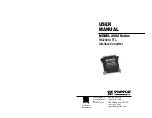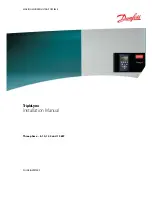
System Timers
7-7
System Timing
Figure 7−4. System Timing Interrupt Control
The MSECH (FD
H
) and MSECL (FC
H
) SFRs should be set to a value such that
the system clock divided by the value of these SFRs, plus one, generates a 1ms
clock. For example, given a system clock of 12.000MHz, MSECH/MSECL should
be set to 12 000 000 / 1000 = 12 000 – 1 = 11 999. Thus, for a 12.000MHz system
clock, MSECH/MSECL should be set to 11 999 to generate a 1ms clock.
In reality, the MSECH/MSECL SFRs may be set to a value that produces a
clock that is something other than 1ms. This works fine, as long as the other
timers that depend on the MSECH/MSECL SFR are adjusted accordingly.
7.2.2.1
Milliseconds Auxiliary Interrupt
The milliseconds interrupt is one of the auxiliary interrupts that may be used
by the user program. The milliseconds auxiliary interrupt is enabled by setting
EMSEC (AIE.4) and enabling auxiliary interrupts via the EAI (EICON.5) bit.
The frequency at which the milliseconds interrupt will be triggered is controlled
by the value written to the MSINT (FA
H
) SFR.
When enabled, a millisecond auxiliary interrupt will be triggered after MSINT + 1ms,
assuming that MSECH/MSECL have been configured to produce a correct
milliseconds clock. The value written to the MSINT SFR is a value between 0 and
127, meaning that the milliseconds interrupt may be triggered every 1ms to 128ms
(assuming a correct milliseconds clock).
For example, given an accurate milliseconds clock, setting MSINT to 5 would
produce a milliseconds auxiliary interrupt every 6ms.
Bit 7 of MSINT, when written, indicates whether the MSINT value being written
should be written immediately, or if it should be written after the current MSINT
count has expired. If bit 7 is set, MSINT will immediately be updated with the
new value; if it is clear, MSINT will be updated with the new value as soon as
the current milliseconds count has expired.
















































